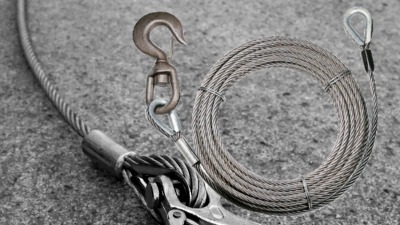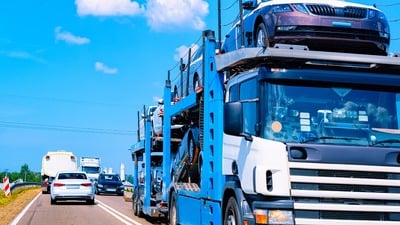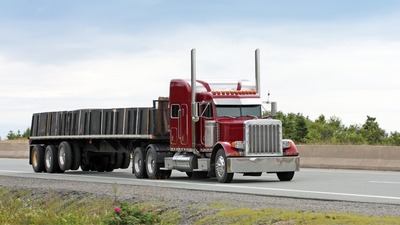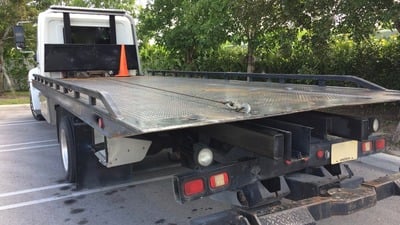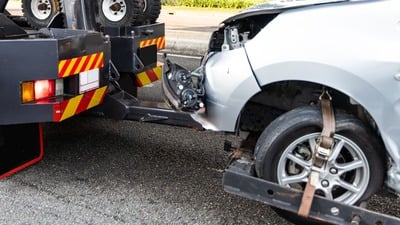Introduction to Modern Wrecker Supplies
Introduction to Winch Cables: Strength and Versatility
Winch cables are tough. Think about the toughest thing you've ever dealt with—these are probably tougher. Made from high-quality steel or synthetic fibers, these cables are designed to pull, lift, or drag heavy loads with jaw-dropping ease. Steel cables, the old-school heroes, are incredibly strong and can handle serious weight. They're what you want when dealing with heavy-duty jobs that would make lesser materials give up and go home. Then there's the newcomer, synthetic cables. Lighter than steel but still incredibly tough, these are your go-to when you need strength without the weight. They're also more flexible and safer to handle because they don't store as much energy as steel does. If they break, they're less likely to cause injury. Whether you're pulling a truck out of a ditch or towing a boat, winch cables are your best friend. They're versatile, stepping up to a variety of tasks without batting an eye. In the world of recovery and towing operations, these cables are the unsung heroes, ready to take on whatever challenge comes their way with unwavering strength and versatility.
The Basics of Recovery and Towing with Winch Cables
Winch cables are the muscle behind effective recovery and towing operations. Think of them as the strong arms that pull heavy loads, helping to rescue vehicles stuck in mud, snow, or any tough spot really. The secret behind their strength lies in the material — most are made from steel or synthetic fiber, each with its own pros and cons. Steel is the go-to for heavy-duty tasks because of its unmatched durability and strength. However, it can be dangerous if it snaps under pressure, potentially causing injury with its whiplash. On the flip side, synthetic cables are lighter and safer as they don’t create deadly whiplashes when they break. But, they wear out faster and aren’t as suited for heavy loads as steel cables. When it comes to using these cables, it's all about precision and expertise. You have to know the right way to hook them up, the appropriate winch capacity for your load, and how to manage the tension without damaging what you're pulling or the winch itself. Always remember, the strength of a winch cable is not just in its ability to pull but in pulling correctly without causing harm or getting worn out prematurely. So, whether you’re a pro at towing and recovery or just looking to learn, understanding these basics about winch cables is key to getting the job done right.
The Basics of Recovery and Towing with Winch Cables
Winch cables are the muscle behind effective recovery and towing operations. Think of them as the strong arms that pull heavy loads, helping to rescue vehicles stuck in mud, snow, or any tough spot really. The secret behind their strength lies in the material — most are made from steel or synthetic fiber, each with its own pros and cons. Steel is the go-to for heavy-duty tasks because of its unmatched durability and strength. However, it can be dangerous if it snaps under pressure, potentially causing injury with its whiplash. On the flip side, synthetic cables are lighter and safer as they don’t create deadly whiplashes when they break. But, they wear out faster and aren’t as suited for heavy loads as steel cables. When it comes to using these cables, it's all about precision and expertise. You have to know the right way to hook them up, the appropriate winch capacity for your load, and how to manage the tension without damaging what you're pulling or the winch itself. Always remember, the strength of a winch cable is not just in its ability to pull but in pulling correctly without causing harm or getting worn out prematurely. So, whether you’re a pro at towing and recovery or just looking to learn, understanding these basics about winch cables is key to getting the job done right.
Innovative Use #1: Multipoint Towing for Enhanced Stability
In recovery and towing operations, stability is key. That's where multipoint towing comes into play, a game-changer for handling tough situations. Instead of using one towing point, multipoint towing uses several winch cables connected to various points on a vehicle. This method spreads out the force applied, drastically increasing stability during the tow. Think of it as the difference between lifting a heavy table by one leg versus lifting it evenly from all sides. With multipoint towing, you're essentially doing the latter, making the tow smoother and reducing the chance of damage. This technique is particularly useful for vehicles in precarious positions or when you need to minimize stress on a damaged vehicle's structure. By employing this innovative use of winch cables, rescuers and towers can ensure a safer, more controlled recovery operation.
Innovative Use #2: Precision Positioning in Confined Spaces
In recovery and towing, getting a vehicle out of a tight spot without causing damage is a high-skill operation. Winch cables come into play here as a precise tool for positioning in confined spaces. Here’s the thing - using winch cables allows operators to apply the exact amount of force needed. This means you can move a stuck vehicle inch by inch, avoiding any scrapes or further complications. This method isn’t just about pulling; it’s about control. For instances where precision is key, like in underground parking lots or between two closely parked cars, winch cables offer the finesse required. Operators can adjust tension and pull direction on the fly, ensuring that the vehicle is repositioned safely and accurately. It turns a potentially complex and damage-prone task into a manageable one, proving that winch cables are more than just brute force tools - they’re precision instruments in the recovery and towing toolkit.
Innovative Use #3: Creative Solutions for Unusual Terrain
Winch cables aren't just for the clear cut and dry. Sometimes, the terrain throws a curveball, and that's where creativity comes into play. For instance, in deep snowy areas or sandy stretches, where a traditional anchor point might not be available, using something like a buried tire or a makeshift anchor can save the day. You dig a hole, bury the item, and use it as your anchor point to winch out the stuck vehicle. This method, often referred to as the "deadman" technique, turns the winch cable into a lifeline in environments where you'd think recovery was impossible. Another trick is to double up the cable with a pulley to increase pulling power. This is particularly handy in steep terrains where the direct pull might not be enough. Keep in mind, assessing the situation and applying these innovative solutions not only showcases the versatility of winch cables but also highlights the importance of quick thinking and resourcefulness in recovery operations.
Ensuring Safety when Using Winch Cables for Recovery and Towing
When it comes to using winch cables for recovery and towing, safety isn't just a priority, it's a must. First thing, always inspect your cable before use. Look for frays, kinks, or rust that could weaken the cable. If it looks worn out, replace it. It's not worth the risk. When operating the winch, keep a safe distance. Stand clear of the cable line and make sure others do too. These cables can snap under tension, turning into dangerous projectiles. Always wear gloves. Metal cables can have tiny burrs that can cut skin. Protect your hands. Use a dampener on the cable. If the cable does break, this helps it fall to the ground instead of flying. Lastly, never exceed the load limit of your winch cable. Pushing it too hard can lead to failure, and nobody wants that. Stick to these practices, and you'll be respecting the power of winch cables while keeping everyone around safe.
Maintenance Tips for Winch Cables to Ensure Longevity
To keep your winch cables in top shape, regular maintenance is key. First off, always check your cable before and after use for any signs of wear, kinks, or frays. If you spot any damage, it's time to replace the cable to avoid any mishaps during recovery operations. Keeping the cable clean is also crucial. Mud, dirt, and debris can increase friction and wear down the cable faster. Rinse it off after use and let it dry before winding it back up. Lubrication is another important step. Apply a light coat of lubricant designed for winch cables; this reduces friction, prevents rust, and extends the cable's life. When winding the cable back onto the winch, make sure it's done evenly and without any overlapping. Uneven winding can cause the cable to wear unevenly and weaken. Lastly, avoid overloading the cable beyond its recommended capacity. Overloading not only poses a safety risk but can also stretch or break the cable. By following these simple tips, your winch cable will be ready for action when you need it, ensuring safe and efficient recovery and towing operations.
The Role of Winch Cables in Large-Scale Rescue Operations
Winch cables play a crucial role in large-scale rescue operations, acting as the muscle behind pulling and lifting heavy loads. These cables, made of strong materials like steel or synthetic rope, are key in saving vehicles stuck in mud, snow, or ditches. Think of winch cables as the heroes in these operations. They’re attached to a winch, which is a device mounted on recovery or towing vehicles. When a vehicle is stuck, the winch cable is extended and secured to the stranded vehicle. With the push of a button, the cable pulls the vehicle to safety. It’s a straightforward yet powerful process. The strength of winch cables means they can handle the weight of cars, trucks, and even larger vehicles without breaking. This reliability is what makes them indispensable in rescue efforts. In emergencies, where every second counts, the efficiency and strength of winch cables can make the difference between a successful rescue and a failure. So, in the world of recovery and towing, the role of winch cables cannot be understated. They are the unseen force making large-scale rescues possible.
Case Studies: Real-Life Examples of Winch Cable Innovation
In the rugged world of recovery and towing, winch cables have proven their worth time and again. Let's talk about a few real-life examples where innovation with winch cables not only solved problems but also pushed the boundaries of what we thought was possible. Imagine a truck stuck deep in mud, a scenario that would usually require multiple vehicles and a lot of time to resolve. There's this one time, a recovery team used a single winch cable, rigged through a series of pulleys, to distribute the force evenly and pull the truck out with just one winch-equipped vehicle. The clever use of physics saved time, fuel, and manpower. Then, there's the case of a large commercial airliner that skidded off a runway into a soft field. Traditional methods of recovery were deemed too risky. The solution? A custom-engineered winch cable setup that evenly distributed the load across the aircraft's frame, allowing for a secure and controlled pullback to the tarmac. This operation set a new standard for aircraft recovery, showcasing the versatility and reliability of winch cables when used creatively. In another instance, in a mountainous region, a winch cable was instrumental in setting up a temporary cableway to transport supplies across a river when the bridge was washed away by floods. This innovative application not only ensured the timely delivery of necessities but also reinforced the adaptability of winch cables in emergency situations. These stories highlight not just the robustness of winch cables, but also the ingenuity of the people behind their innovative uses.
Summary: Expanding the Possibilities with Winch Cables
Winch cables, often seen as just tools for towing or pulling, are actually more versatile than many think. These sturdy cables, designed to haul or winch heavy items, have found their way into both recovery and towing operations in innovative ways. Essentially, winch cables can make tough tasks easier and safer. For instance, in recovery operations, winch cables are not just used for pulling a vehicle out of a ditch. They're also crucial for stabilizing vehicles during tricky rescues or for maneuvering them in tightly packed spaces. In towing, the strength of winch cables ensures that vehicles are securely towed, reducing the risk of accidents. But the innovation doesn't stop there. Beyond traditional recovery and towing, these cables are being repurposed for creating strong, temporary bridges in emergency situations or even for setting up zip lines in outdoor adventure setups. It's the combination of durability, flexibility, and strength that makes winch cables a go-to choice beyond their conventional use. So, next time you see a winch cable, remember, it's not just for towing cars. It's a tool of innovation, opening up new possibilities for handling challenges in recovery operations and beyond.

